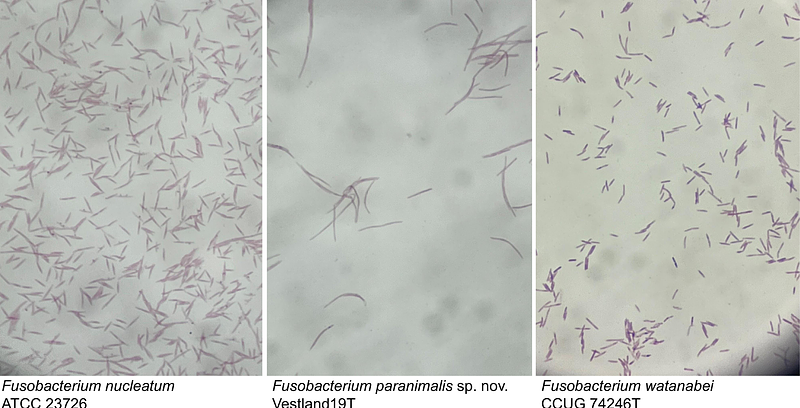Reassessing taxonomy and virulence in the Fusobacterium nucleatum group - Rebuttal of Fusobacterium animalis clades "Fna C1" and "Fna C2", genome announcement for Fusobacterium watanabei and description of Fusobacterium paranimalis sp. nov.

Reassessing taxonomy and virulence in the Fusobacterium nucleatum group - Rebuttal of Fusobacterium animalis clades "Fna C1" and "Fna C2", genome announcement for Fusobacterium watanabei and description of Fusobacterium paranimalis sp. nov.
Sivertsen, A.; Forni, D.; Molteni, C.; Bivand, J. M.; Dimmen, G.; Sironi, M.; Kommedal, O.
AbstractThere is a considerable interest in the association between Fusobacterium animalis and colorectal cancer (CRC). Recently, it was suggested that this association is valid only for a distinct clade of F. animalis (Fna C2) and that F. animalis strains belonging to another clade (Fna C1) are only associated with the oral cavity. It was further suggested that this made Fna C1 a natural comparator when looking for candidate genes associated with the pathogenicity of Fna C2. Based on such comparisons, three candidate operons enriched in CRC were suggested to explain the strong colorectal tumor association of F. animalis. In the present paper we show that major taxonomic errors invalidate the existence of two distinct clades of F. animalis and that Fna C1 is simply a rediscovery and misclassification of Fusobacterium watanabei. We further reassess the phylogenetic structure of the entire Fusobacterium nucleatum group encompassing F. animalis and all known closely related species and confirm the current taxonomy using contemporary phylogenetic principles. We also describe a novel Fusobacterium species more closely related to F. animalis than any other known species, for which we propose the name Fusobacterium paranimalis sp. nov.. We further searched for the three proposed candidate virulence operons of F. animalis across the entire F. nucleatum group and show that some or all of these are present in all other species except F. watanabei. We also observe considerable variability of Type 5 secretion systems (T5SS) by subtype and abundance across the F. nucleatum group.